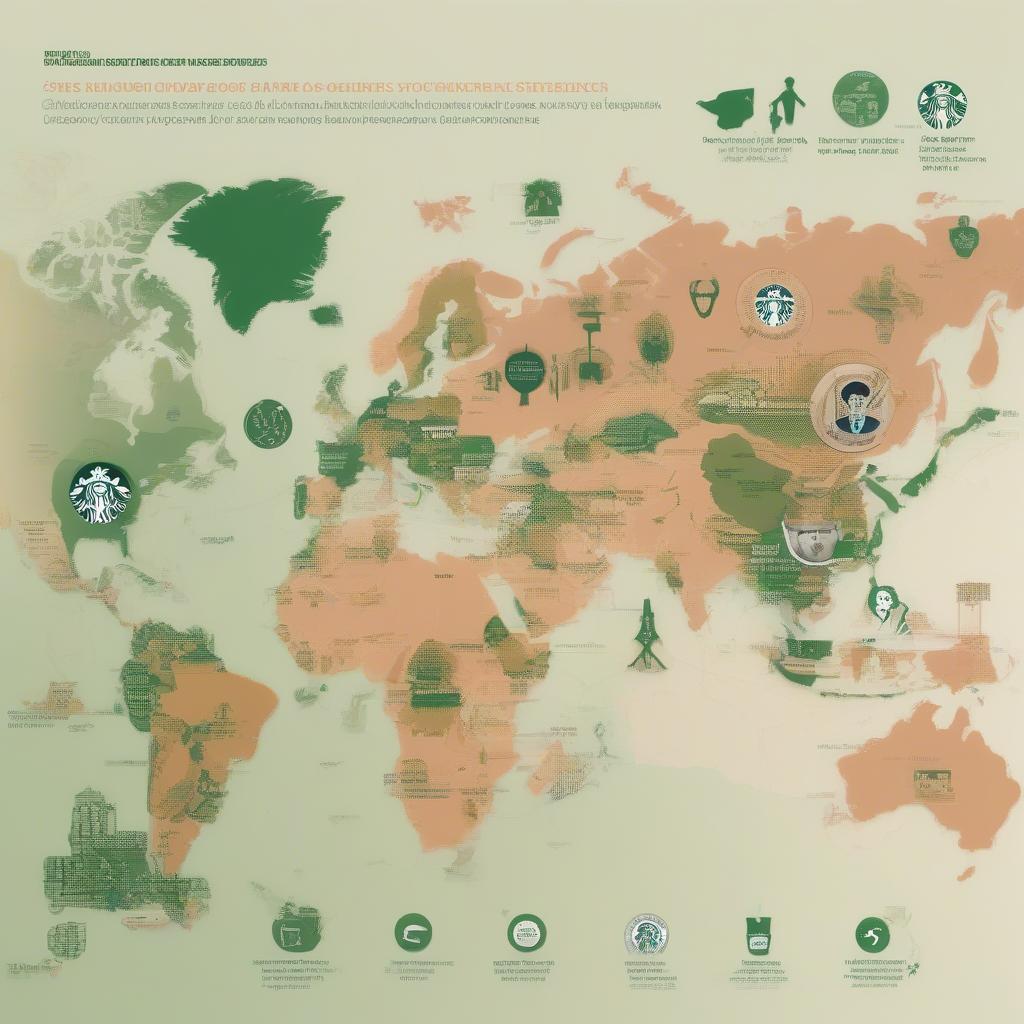
Starbucks, a global coffeehouse giant, faces a dynamic and ever-evolving landscape. Understanding the forces shaping its future requires a comprehensive analysis of its external environment. A PESTEL analysis of Starbucks provides valuable insights into the political, economic, social, technological, environmental, and legal factors influencing not only the company itself, but also the future of the entire coffee industry. What does Starbucks’s PESTEL analysis tell us about where the industry is headed? Let’s dive in.
Table Content:
- Political Factors Influencing Starbucks and the Coffee Industry
- Economic Factors Shaping the Future of Coffee
- Social Trends Impacting Starbucks and the Coffee Industry
- Technological Advancements in the Coffee Industry
- Environmental Concerns and Sustainability in Coffee
- Legal and Regulatory Landscape for Coffee
- FAQs About Starbucks and the Coffee Industry
- Conclusion: Navigating the Future of Coffee
Political Factors Influencing Starbucks and the Coffee Industry
How do political landscapes impact Starbucks’s operations? Government regulations, trade policies, and political stability in different countries play a crucial role. Taxation on imported coffee beans, for instance, can significantly impact Starbucks’s pricing strategy. Similarly, political instability in a coffee-producing region can disrupt supply chains, affecting availability and cost. These factors are not unique to Starbucks and have ripple effects throughout the industry, impacting smaller coffee shops and even instant coffee producers.
 Starbucks Political Factors Image
Starbucks Political Factors Image
Economic Factors Shaping the Future of Coffee
What economic forces are at play in the coffee industry? Economic growth, inflation, and consumer spending directly influence Starbucks’s performance. A strong economy typically translates to higher consumer spending on premium coffee, benefiting Starbucks. Conversely, economic downturns can lead to decreased demand. This economic sensitivity is a shared characteristic across the coffee industry, with cafes and coffee brands alike feeling the impact of economic fluctuations.
Social Trends Impacting Starbucks and the Coffee Industry
How do societal shifts impact coffee consumption? Changing consumer preferences, health consciousness, and social responsibility are key factors. The growing demand for ethical sourcing and sustainable practices influences Starbucks’s procurement strategies. The increasing popularity of specialty coffee and unique beverage customizations further shapes the company’s menu innovation. These social trends are driving forces in the broader coffee industry, influencing consumer choices across all coffee segments.
 Starbucks Social Responsibility Initiatives
Starbucks Social Responsibility Initiatives
Technological Advancements in the Coffee Industry
What role does technology play in the future of coffee? Mobile ordering, loyalty programs, and data analytics are transforming the coffee experience. Starbucks’s mobile app, for example, enhances customer convenience and personalization. Automation and innovative brewing technologies are improving efficiency and consistency. These technological advancements are reshaping the entire coffee landscape, from bean to cup.
Environmental Concerns and Sustainability in Coffee
How is sustainability impacting the coffee industry? Climate change, deforestation, and waste management are pressing environmental concerns. Starbucks’s commitment to ethical sourcing and sustainable farming practices reflects the growing importance of environmental responsibility. The industry as a whole is increasingly focused on minimizing its environmental footprint, adopting eco-friendly packaging and promoting responsible waste disposal.
 Starbucks Environmental Sustainability
Starbucks Environmental Sustainability
Legal and Regulatory Landscape for Coffee
What legal and regulatory factors influence Starbucks? Food safety regulations, labeling requirements, and labor laws are crucial considerations. Compliance with these regulations is essential for maintaining Starbucks’s reputation and operational integrity. These legal and regulatory frameworks apply across the coffee industry, ensuring consumer safety and fair labor practices.
FAQs About Starbucks and the Coffee Industry
Q: How does Starbucks’s PESTEL analysis inform its strategic decision-making?
A: By understanding the external factors impacting the business, Starbucks can proactively adapt its strategies to mitigate risks and capitalize on opportunities.
Q: What are the key takeaways from Starbucks’s PESTEL analysis regarding the future of the coffee industry?
A: Sustainability, technology, and evolving consumer preferences are shaping the future of coffee, driving innovation and competition.
Q: How does Starbucks address the challenges posed by political and economic instability in coffee-producing regions?
A: Diversifying sourcing, building strong relationships with suppliers, and hedging against price volatility are some strategies employed by Starbucks.
Q: How does Starbucks leverage technology to enhance customer experience and operational efficiency?
A: Mobile ordering, personalized recommendations, and automated brewing systems are some examples of how Starbucks uses technology.
Q: What is Starbucks’s approach to environmental sustainability in the coffee industry?
A: Ethical sourcing, sustainable farming practices, and waste reduction initiatives are key elements of Starbucks’s environmental strategy.
Q: How does Starbucks ensure compliance with legal and regulatory requirements in different countries?
A: Starbucks has robust compliance programs and works closely with local authorities to adhere to regulations related to food safety, labeling, and labor practices.
Q: How does Starbucks’s PESTEL analysis compare to that of other major coffee chains?
A: While the general PESTEL factors apply across the industry, each company’s specific circumstances and strategic priorities influence their response to these factors.
Conclusion: Navigating the Future of Coffee
Starbucks’s PESTEL analysis provides a comprehensive overview of the multifaceted forces shaping the future of the coffee industry. From political and economic influences to social and technological trends, the analysis highlights the dynamic landscape that Starbucks and its competitors navigate. By understanding these factors, Starbucks can effectively strategize for future growth and sustainability. What will your next Starbucks order be? Share your thoughts in the comments below!

